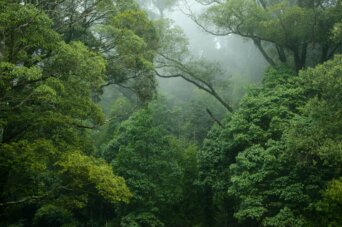- About
- Topics
- Picks
- Audio
- Story
- In-Depth
- Opinion
- News
- Donate
- Signup for our newsletterOur Editors' Best Picks.Send
Read, Debate: Engage.
| topic: | Conservation |
|---|---|
| located: | Democratic Republic of the Congo |
| editor: | Bob Koigi |
Over twenty years after the Salonga National Park in the Democratic Republic of Congo - Africa’s largest tropical rainforest reserve and the second globally - was placed in the List of World Heritage in Danger by The World Heritage Committee due to the numerous threats the sanctuary had faced, it was recently removed from the list thanks to improved conservation efforts and commitment by the Congolese government.
The expansive park, spanning across 3.6 million hectares and located at the heart of the iconic Congo basin, is home to various threatened species, including the forest elephant, Bonobo, dwarf chimpanzee and the Congo peacock, among others.
But the park and the flora and fauna it hosts have been under immense threats over the years, which ranged from exploitation by oil and gas companies, poaching and human encroachment to deforestation, logging, illegal hunting of bushmeat, river pollution and illicit fishing.
Then, in a historic move, a recent review by a mission of International Union for Conservation of Nature (IUCN) and The United Nations Educational, Scientific and Cultural Organization (UNESCO) gave a thumbs up to the conservation efforts and management of the park.
For example, according to the mission, the heightened anti-poaching measures and constant monitoring of the wildlife had seen the stabilisation of the bonobo population and the recovery of the forest elephant population saying that the park was no longer endangered.
However, while this remains commendable, the world should not lose sight of the importance of this sanctuary and should exert pressure on the DR Congo government to uphold its commitment to protect the park by bolstering surveillance.
While there are numerous competing interests, mostly of players in the extractive industry, to explore oil in the region, the historic value that the park, the inhabitants and the basin hold should and can never be compromised.
Image: Lingchor.

